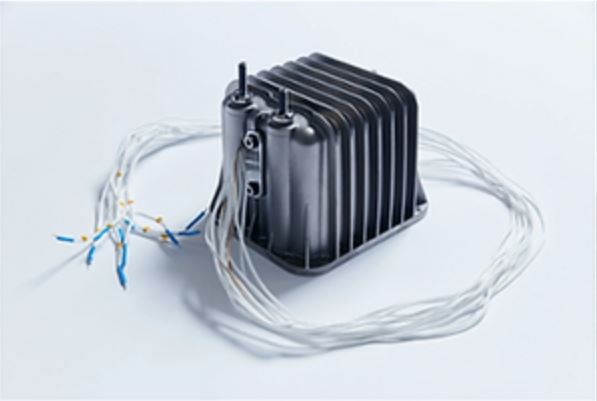ULC-Energy, Topsoe, and Rolls-Royce SMR have joined forces to explore the possibilities of producing hydrogen using Topsoe’s Solid Oxide Electrolysis Cell (SOEC) technology, powered by both electricity and heat generated from a Rolls-Royce SMR nuclear power plant.
This partnership represents a significant leap in the quest for economical and sustainable hydrogen production. But what makes this approach stand out in the increasingly crowded field of hydrogen generation methods?
Nuclear energy has long been recognized as a reliable and consistent power source, with the ability to operate up to 95% of the time. When combined with SOEC technology, the advantages become even more pronounced.
The process of electrolysis, the means by which hydrogen is extracted from water, traditionally requires a substantial amount of electricity. SOEC technology, however, operates at a high temperature, which reduces the electrical input needed for hydrogen production. This high-temperature approach opens the door to more efficient and cost-effective hydrogen generation.
One of the key innovations in this project lies in the ability of nuclear power plants to provide both electricity and heat. The application of this heat, in particular, is a game-changer. By utilizing the heat directly, energy losses that typically occur in the steam turbine can be avoided. This, in turn, increases the overall energy capacity of the nuclear power plant beyond its electric power rating.
Another remarkable aspect of this collaboration is the Rolls-Royce SMR nuclear power plant’s flexibility. When needed, it can switch to deliver power to the grid, serving as a backup to variable power sources. This ability to step in and provide power during times when other sources are unavailable adds a layer of reliability and stability to the energy grid.
The joint investigation conducted by ULC-Energy, Topsoe, and Rolls-Royce SMR aims to not only produce clean hydrogen but also assess its competitiveness in the green energy market. The operational flexibility of this unique combination of nuclear power and SOEC technology will be evaluated, with a focus on how it can meet the demands of a future energy landscape increasingly reliant on hydrogen.
Dirk Rabelink, CEO of ULC-Energy, emphasizes the pivotal role of hydrogen in future energy markets. The combination of nuclear energy and high-temperature electrolysis has the potential to produce zero-emission hydrogen competitively, and the additional value of operational flexibility strengthens the business case for this solution.
Jack H. Carstensen, Business Development Director at Topsoe, highlights the efficiency of SOEC technology when coupled with nuclear energy. The inherent fast-reaction kinetics and optimized conductivity of high-temperature electrolysis result in a higher hydrogen production rate per unit of power input compared to alternative electrolysis methods.
Harry Keeling, Rolls-Royce SMR’s Head of Industrial Markets, underscores the significance of producing low-cost hydrogen as a critical step towards decarbonizing society. This collaborative agreement is a significant stride towards unleashing the full potential of the Rolls-Royce SMR, enabling the large-scale generation of affordable hydrogen.
In conclusion, the ULC-Energy, Topsoe, and Rolls-Royce SMR partnership presents a compelling vision for the future of clean hydrogen production. By harnessing the consistent energy output of nuclear power and the efficiency of high-temperature electrolysis, this collaboration holds the promise of delivering an economical and reliable source of clean hydrogen. As the world seeks innovative solutions to address the climate crisis, the synergy of nuclear energy and SOEC technology offers a beacon of hope for a sustainable and low-carbon future.
